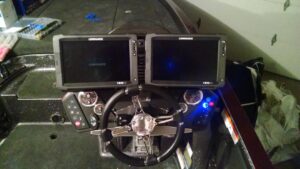Introduction: In the ever-evolving landscape of scientific research and collaboration, TotallyScience GitLab has emerged as a game-changing platform, empowering scientists and researchers to collaborate, share knowledge, and accelerate scientific discoveries. In this article, we delve into the functionalities and benefits of TotallyScience GitLab, highlighting its role in fostering innovation, enhancing collaboration, and driving scientific progress. Join us as we explore the features, use cases, and advantages of this cutting-edge platform.
Introducing TotallyScience GitLab
Overview: Provide an overview of TotallyScience GitLab, highlighting its purpose, features, and relevance in the scientific community.
Benefits of Collaboration: Discuss the importance of collaboration in scientific research and emphasize how TotallyScience GitLab facilitates seamless collaboration among scientists and researchers.

Features of TotallyScience GitLab
Version Control: Highlight the version control capabilities of TotallyScience GitLab, allowing researchers to track changes, manage code, and collaborate on projects efficiently.
Issue Tracking: Discuss the issue tracking functionality, enabling researchers to report and resolve problems, discuss solutions, and enhance project management.
Code Review and Collaboration: Emphasize the code review and collaboration features of TotallyScience GitLab, facilitating constructive feedback, peer review, and streamlined teamwork.
Use Cases of TotallyScience GitLab
Collaborative Research Projects: Explore how TotallyScience GitLab supports collaborative research projects, providing a central repository for data, code, and research findings.
Open-Source Contributions: Highlight how TotallyScience GitLab encourages open-source contributions within the scientific community, fostering knowledge sharing and accelerating scientific progress.
Reproducible Research: Discuss how TotallyScience GitLab promotes reproducibility in scientific research, allowing researchers to share workflows, methodologies, and data to ensure transparency and credibility.
Advantages of TotallyScience GitLab
Seamless Integration: Discuss how TotallyScience GitLab integrates with other tools and platforms commonly used in scientific research, enabling a smooth workflow and enhancing productivity.
Security and Privacy: Highlight the robust security measures implemented by TotallyScience GitLab to ensure the protection of sensitive scientific data and intellectual property.
Community Support and Customizability: Emphasize the vibrant community surrounding TotallyScience GitLab, providing support, resources, and the ability to customize the platform according to specific research needs.
Driving Scientific Progress
Accelerating Discoveries: Discuss how TotallyScience GitLab accelerates the pace of scientific discoveries by fostering collaboration, facilitating knowledge sharing, and eliminating barriers to research.
Enhancing Efficiency: Highlight how TotallyScience GitLab streamlines research workflows, improves project management, and increases the efficiency of scientific teams.
Cultivating Innovation: Explore how TotallyScience GitLab encourages innovation by providing a platform for researchers to experiment, iterate, and develop new ideas collaboratively.
Conclusion
TotallyScience GitLab stands at the forefront of scientific collaboration, revolutionizing the way researchers and scientists work together to advance knowledge and drive scientific progress. With its powerful features, seamless integration capabilities, and strong emphasis on collaboration, TotallyScience GitLab empowers scientists to overcome traditional barriers and collaborate effectively on projects of any scale. As the scientific community continues to embrace this transformative platform, the potential for groundbreaking discoveries and collaborative achievements becomes even more promising. Keep an eye on TotallyScience GitLab as it continues to shape the future of scientific research and collaboration.




